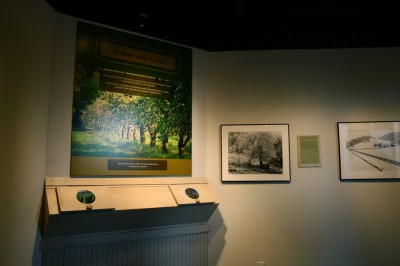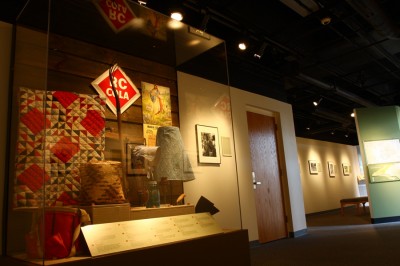On Earth’s Furrowed Brow: A Photography Exhibit of a Disappearing Lifestyle
Between 2002 and 2007, North Carolina lost more than 1,000 farms and 600,000 acres of farmland. That’s a staggering set of figures, but really should come as no surprise. Farming as a way of life has been in decline since the Great Depression, but in recent years this decline has accelerated significantly. As housing developments rapidly encroach on land once used to grow crops, property values (and in turn, taxes) have risen as well. For many, it’s becoming too difficult to carry on with the family farm.
Asheville-based photographer Tim Barnwell has been documenting this way of life and its decline for the past 25 years, and now you can see the results of this almost lifelong quest at the North Carolina Museum of History. Titled On Earth’s Furrowed Brow: The Appalachian Farm in Photographs, the exhibit documents in black and white the people and landscape of a rural place that time once forgot, but is now catching up with. Most of the images include quotations or historical context for the photograph displayed. From stories of how loved ones met, to life before electricity, as well as dealing with the strife associated with carving out a living day to day, the words are sure to give a striking glimpse into a world quite different than the urban life of downtown Raleigh.
In addition to the mounted photography pieces, there are two stations providing olfactory documentation as well: the smells of cured tobacco, Christmas trees, ripe apples, and sorghum molasses. Two of these smells were especially reminiscent for me, as both apple farming and Christmas tree farming were common in the Appalachian area where I grew up (Henderson County). The stories I read and photography observed were reminiscent as well; because not only did I grow up surrounded by a farming way of life, but it’s how my mother’s parents lived in rural Mitchell County.
Most of Tim’s documentary photography is from Madison County (north of Asheville), but also includes Swain, Yancey, Jackson, among others.
The stories told not only convey a sense of getting by, but tremendous loss and sadness not taught in classrooms or in history books:
In 1918, during the First World War, the soldiers spread the flu when they traveled through the country, and when they come back here from Europe … Between a third and half the people that got it died within six months. My grandma said that, starting the fall of 1918, a funeral procession would pass by her house about every day.
My grandmama said that a lot of times they didn’t have time to build caskets; they just rolled ’em in sheets and buried ’em. Just family members to bury them, maybe women and and folks, diggin’ shallow graves maybe twenty-four inches deep. That’s why all these cemeteries back in the mountains have maybe fifteen or twenty graves clustered all together, no identification, just rocks.
–Analo Phillips
One resident is quoted as lamenting the fact that most people don’t know how to grow a garden anymore. While it may seem that what rural mountain folk have to say to us city dwellers is not terribly relevant; it is – as a society we’ve forgotten how to grow our own food and sustain ourselves. What is being said from a people who are considered by some to be backward and primitive is more prophetic than we realize. Should disaster strike and we can no longer import food from distant parts of the country and indeed the world, we’ll be in a world of trouble.
See the exhibit and consider the importance of the person who grows food for a living. Before too long, photographs and artifacts such as the ones on display here are all that we’ll have to remind us of what it was like for families to completely sustain themselves from the land.
This exhibit documenting Appalachian farming communities is on display at the North Carolina Museum of History until October 4th.






 Sign up for the Newsletter
Sign up for the Newsletter
05/26/2009
Great post – gosh, John, I’ve never seen you do so much WRITING on Goodnight, Raleigh :)
I will definitely be checking this out. Thanks for the images and their very interesting thoughts on the matter.
05/26/2009
A very important collection of photos and stories. I hope this inspiries people to take action, support their local farmers. Farmers feed the world!